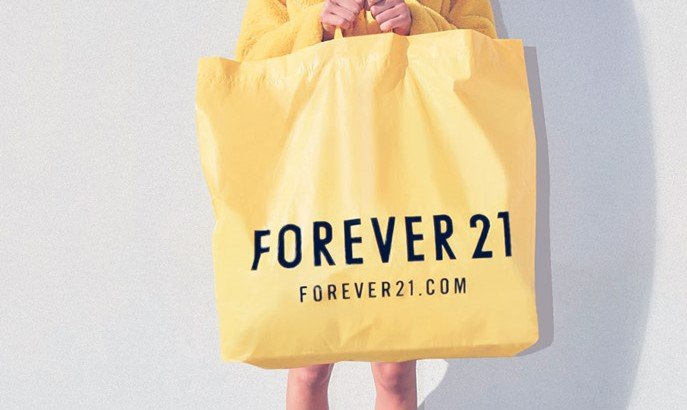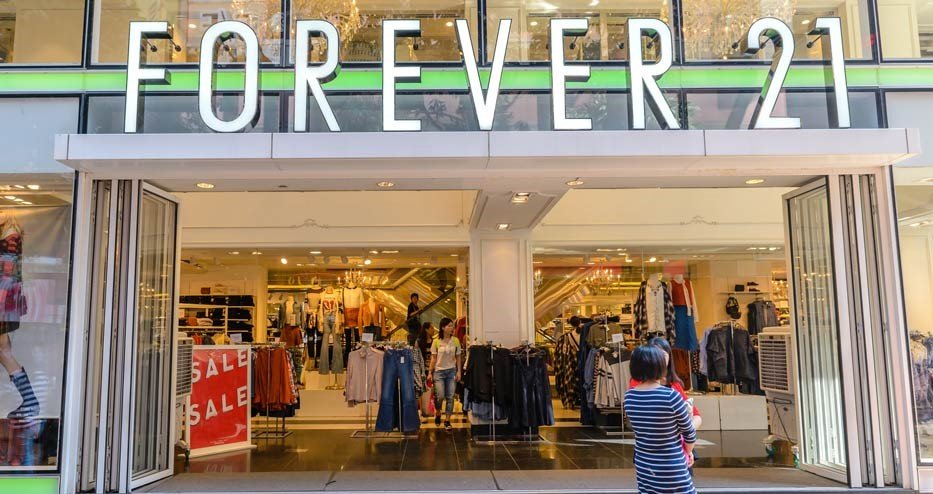Marketing Strategy of Forever 21 – Forever 21 Marketing Strategy: Forever 21 is a Fashion brand based in Los Angeles, California. American Apparel brand Fashion 21 was established in 1984. The first store was called Fashion 21. It has since grown to include a clothing line with brands XXI Forever and Love 21, Forever 21, and Heritage.
The majority of the apparel (around 60%) is made in China. It is then exported to other Asian countries, America, and the UK.
Contents
- 1 Forever 21 At A Glance – Marketing Strategy of Forever 21
- 2 Forever 21 Competitors
- 3 Marketing Strategy of Forever 21
- 4 Forever 21 Marketing Strategy – Segmentation, Targeting, Positioning
- 5 Forever 21 Mission Statement
- 6 Forever 21 Vision Statement
- 7 Forever 21 Tagline
- 8 Forever 21 Marketing Strategy – Competitive Advantage
- 9 Forever 21 Marketing Strategy – BCG Matrix
- 10 Forever 21 Marketing Strategy – Distribution Strategy
- 11 Forever 21 Marketing Strategy – Brand equity
- 12 Forever 21 Marketing Strategy – Competitive Analysis
- 13 Forever 21 Marketing Strategy – Market Analysis
- 14 Forever 21 Marketing Strategy – Customer Analysis
Forever 21 At A Glance – Marketing Strategy of Forever 21
[wp-svg-icons icon=”office” wrap=”I”] Company : Forever 21
[wp-svg-icons icon=”user” wrap=”I”] CEO: Daniel Kulle
[wp-svg-icons icon=”user” wrap=”I”] Founder: Do Won Chang | Jin Sook Chang
[wp-svg-icons icon=”calendar” wrap=”I”] Year founded: 21 April 1984, Highland Park, Los Angeles, California, United States
[wp-svg-icons icon=”location-2″ wrap=”I”] Headquarters: Los Angeles, California, U.S.
[wp-svg-icons icon=”stats” wrap=”I”] Annual Revenue: US$3.4 billion
[wp-svg-icons icon=”bars” wrap=”i”] Profit | Net income: US$124 million
[wp-svg-icons icon=”pie” wrap=”i”] Products & Services: Forever 21 is an online shopping site for Women & Men Fashion | latest Clothing, Shoes & Fashion Accessories.
[wp-svg-icons icon=”globe” wrap=”I”] Website: www.forever21.com
Forever 21 Competitors
[wp-svg-icons icon=”pacman” wrap=”I”] Competitors: TechStyle Fashion Group | Abercrombie & Fitch Company | Zappos | American Apparel | Michael Kors – New York | Chanel | Burberry
Forever 21 Fun Fact: The company peaked in 2015 with $4.4 billion in sales from more than 600 stores. The Changs had a combined net worth of $5.9 billion. Forever 21 rose to great success by turning over their inventory quickly and keeping their prices low. However, their core demographic of teenagers are flocking to online shopping.
Marketing Strategy of Forever 21
Forever 21’s Marketing Strategy covers various aspects of the business right from segmentation and targeting to the overall mission and vision of the company and the various parameters which the company executes to become the top brand that it has in the market. So what is the Marketing Strategy of Forever 21? Let us discuss.
Forever 21 Marketing Strategy – Segmentation, Targeting, Positioning
Companies working in the clothing sector use a mix of demographic, and geographical segments. Variables such as age, expectations and gender, income group, location, family size, loyalty, personality attributes, and Lifestyle are all considered. Forever 21 uses segmentation techniques to do the same.
The company uses a mass strategy to compete in the fashion industry. Target customers with distinctive features and offers.
Specialty retail store has created a brand image based on trendy, young, and fashionable products that are ahead of fashion. The company’s positioning is based on a value-based positioning strategy.
Forever 21 Mission Statement
Mission- “To offer customers an unprecedented selection at affordable prices and to be always changing and always in style”
Forever 21 Vision Statement
“to inspire all customer’s shopping experience by providing a captivating and exciting store environment with a never-ending flow of fun, on-trend fashion at a great value.”
Forever 21 Tagline
Tagline-“Fashion is for everyone”.
Forever 21 Marketing Strategy – Competitive Advantage
Trendy pricing is:
The brand is known for offering fashionable products at a budget price that will fit the customers’ pockets and give them the feeling of value for their money.
Limited presence:
The company is not present in all markets. This is helping the company to optimize its operational costs and focus on its most profitable and sustainable outlets.
Forever 21 Marketing Strategy – BCG Matrix
Two distinct business segments are represented by the company: clothing for women and men. It is also known for its women’s clothing, and its men’s clothes business is still being managed in the industry.
The BCG matrix features the women’s clothing vertical, while Forever 21’s BCG matrix shows the men’s vertical as the question mark.
Forever 21 Marketing Strategy – Distribution Strategy
The Company has fashion shops under the different brands FOREVER 21, Love 21, and XXI Forever. It has opened more than 600 stores over the past 30 years, and it is in planning to open 600 additional stores.
The company distributes its products through a mix of channels of distribution like company-owned outlets, franchised outlets, and retail chains.
FOREVER 21 stores average 38,000 square feet in size, while the largest store is 162,000 square footage.
Forever 21 Marketing Strategy – Brand equity
Forever 21 was ranked 103 rd on the Forbes List of America’s Largest Private Companies (Dec 2016,) and has been valued at $8 billion (based upon the Market Capitalization method). As of December 2017, the brand’s total revenue was $8 billion.
The company has been involved in sponsorships and participation in fashion shows, which have helped to increase brand awareness on the market and thus the brand recall.
Forever 21 Marketing Strategy – Competitive Analysis
Forever 21 competes in the market based on assortments, replenishment, stock availability, price, penetration to emerging and developed nations, and fashionable clothing.
It is competing with companies like Chanel and Zara in one or more segments.
Forever 21 Marketing Strategy – Market Analysis
Slow domestic growth, low labor costs, and government regulations are all affecting the industry’s exports as well as its domestic market.
Companies in this sector have seen rapid growth due to changes in lifestyles, the desire to look good, the migration of customers from rural areas to urban centers, the improvement of the standard of living, and the acceptance of trendy clothing in emerging markets.
Forever 21 Marketing Strategy – Customer Analysis
The brand’s customers are middle-class and upper-middle-class, most of whom live in urban centers and are between 15-40 years old.
Customers of the brand are more fashionable and love trendy clothes. They also want to be smart and confident.
You May Also Like:
- Chanel Marketing Strategy – Marketing Strategy of Chanel
- Chevrolet Marketing Strategy – Marketing Strategy of Chevrolet
- Absolut Vodka Marketing Strategy
- Acer Marketing Strategy
- Land Rover Marketing Strategy
This is the Marketing Strategy of Forever 21. Please let us know if you have additional suggestions to add.
[wp-svg-icons icon=”bubbles” wrap=”i”] Let us know What do you think? Did you find the article interesting?
Write about your experiences and thoughts in the comments below.


